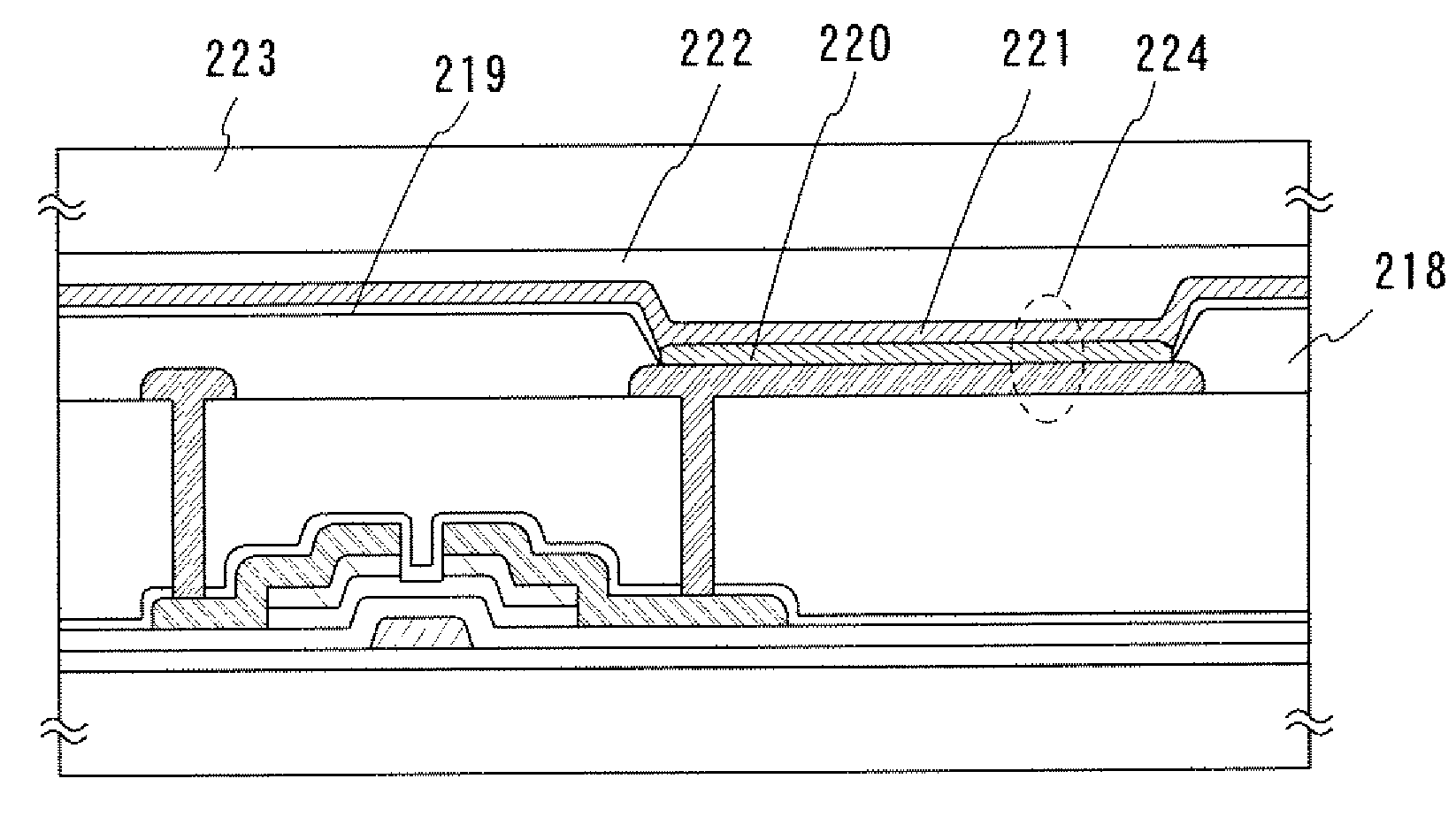Method for forming pattern, method for manufacturing light emitting device, and light emitting device
a technology of light emitting devices and manufacturing methods, which is applied in the direction of solid-state devices, electric lighting sources, electric light sources, etc., can solve the problems of degrading the electric characteristics of light emitting elements and increasing the number of manufacturing steps, and achieves easy forming, high accuracy, and increased manufacturing steps
- Summary
- Abstract
- Description
- Claims
- Application Information
AI Technical Summary
Benefits of technology
Problems solved by technology
Method used
Image
Examples
embodiment mode 1
[0040]Embodiment Mode 1 will describe, as a method for forming a pattern of the present invention, a method for manufacturing a light emitting element in which a liquid-repellent part and a lyophilic part are separately formed over the surface of a substrate.
[0041]A photocatalytic conductive film 102 is formed over a substrate 101 as shown in FIG. 1A. Note that the photocatalytic conductive film 102 functions as one of electrodes of a light emitting element which is formed later.
[0042]For the substrate 101, a glass substrate, a quartz substrate, a substrate formed of an insulating substance such as ceramics, e.g., alumina, a plastic substrate, a silicon wafer, a metal plate, or the like can be used. In addition, for the photocatalytic conductive film 102, indium tin oxide (ITO), indium zinc oxide (IZO) which is obtained by mixing zinc oxide (ZnO) of 2% to 20% inclusive into indium oxide, indium tin oxide containing silicon oxide as a constituent, indium oxide doped with tin, zinc ox...
embodiment mode 2
[0087]Embodiment Mode 2 will describe a method for manufacturing a light emitting device including a thin film transistor which is electrically connected to the light emitting element manufactured in Embodiment Mode 1, with reference to FIGS. 3A to 3D.
[0088]As shown in FIG. 3A, an insulating film 201 is formed over a substrate 200. The insulating film 201 functions as a base insulating film and suppresses mixture of impurity elements from a glass substrate into a semiconductor film which is formed later. The insulating film 201 is formed as needed. The insulating film 201 can be formed using an inorganic material such as silicon nitride oxide (SiNxOy (X>Y)), aluminum oxide, aluminum nitride, aluminum oxynitride, or aluminum nitride oxide.
[0089]As a specific example of the insulating film 201, a single layer structure of a silicon nitride film or a silicon oxynitride film with a thickness of less than or equal to 10 nm, or a two-layer structure in which a silicon nitride oxide film i...
embodiment mode 3
[0116]Embodiment Mode 3 will describe a method for manufacturing a light emitting device including a light emitting element electrically connected to an organic thin film transistor with reference to FIGS. 4A to 4D.
[0117]As in Embodiment Mode 2, an insulating film 301 is formed over a substrate 300. Then, a first conductive film 302 which functions as a gate electrode is formed over the insulating film 301. It is acceptable as long as the first conductive film 302 is formed of a metal which has an insulating property by nitridation or oxidation, preferably, tantalum (Ta), niobium (Nb), aluminum (Al), copper (Cu), titanium (Ti), or the like. Besides, tungsten (W), chromium (Cr), nickel (Ni), cobalt (Co), magnesium (Mg), or the like can also be used.
[0118]A manufacturing method of the first conductive film 302 is not limited to a particular method, and the first conductive film 302 may be formed by a sputtering method, an evaporation method, or the like and patterned into a desired sh...
PUM
| Property | Measurement | Unit |
|---|---|---|
| contact angle | aaaaa | aaaaa |
| contact angle | aaaaa | aaaaa |
| wavelength | aaaaa | aaaaa |
Abstract
Description
Claims
Application Information
 Login to View More
Login to View More - R&D
- Intellectual Property
- Life Sciences
- Materials
- Tech Scout
- Unparalleled Data Quality
- Higher Quality Content
- 60% Fewer Hallucinations
Browse by: Latest US Patents, China's latest patents, Technical Efficacy Thesaurus, Application Domain, Technology Topic, Popular Technical Reports.
© 2025 PatSnap. All rights reserved.Legal|Privacy policy|Modern Slavery Act Transparency Statement|Sitemap|About US| Contact US: help@patsnap.com



